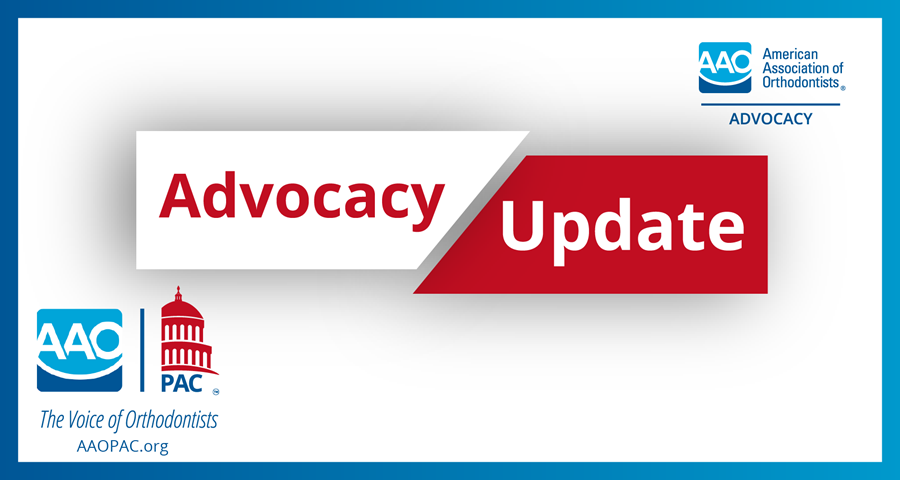The AAO recently solicited member input on technology and business environment topics of high interest to members, for the purpose of commissioning a series of reports on how emerging technologies and market forces are currently impacting orthodontics and are expected to progress within the specialty. Regulatory, industry and other conditions likely to impact each topic would also be examined.
Spearheading this initiative is the AAO Business Development Task Force (BDTF), of which Dr. John Callahan, president-elect of the AAO, is the chair and Mindi Brothers, AAO vice president of strategy and innovation is the staff liaison.
“Our current Strategic Plan has as one of its initiatives, ‘Develop and execute environmental and technology scanning’ as it applies to orthodontics, so we can be proactive instead of reactive,” said Dr. Callahan. “The BDTF was tasked by the AAO Board to implement this initiative.
“Informed by our aligned, orthodontic tech-savvy and forward-thinking groups like the AAO Committee on Technology (CTECH), our Future Think Tank and our Futurist Study Task Force, the BDTF recommended that, by far, the first priority area should be artificial intelligence and machine learning,” Dr. Callahan continued. “We see AI/ML having a great impact on our members both in clinical application and non-clinical applications for the small business owner.”
The BDTF and CTECH guided the Campfire Consulting Group, which the AAO retained to develop the first environmental scan report, on aspects of artificial intelligence and machine learning that it should explore. The AAO is now publishing the report, titled “Developments in Artificial Intelligence and Impacts on Orthodontics.”
The report’s findings on AI and ML address how AI and Machine Learning (ML) is being used in US healthcare, FDA guidance and challenges, trends in AI/ML in radiology, AI/ML utilization opportunities in dentistry and orthodontics, current applications in orthodontics, integration of AI with clinicians, patient views on AI, ethical considerations and the outlook for AI/ML devices and algorithms in orthodontic practices.
Key takeaways include:
FDA Guidance and Approval Challenges
AI for use in U.S. healthcare applications would be subject to Food and Drug Administration review, but many AI and ML (Machine Learning) technologies may not fit well within current medical device regulation processes. The FDA is exploring alternative review approaches to ensure product safety and effectiveness. State regulators would likely wait for federal guidance.
Trends in AI and ML in Radiology
Of AI or ML devices currently cleared or approved for US marketing by the FDA, the most common application is in radiology. According to the report, “Radiologists . . . quickly leveraged the technology since there is a substantial amount of information in imaging that can be used to rapidly train the AI algorithms. Once established, AI enabled devices can precisely analyze medical images, detecting subtle patterns or abnormalities that might be missed by human radiologists. This can lead to earlier and more accurate diagnoses, improving patient outcomes.”
Current Applications in Orthodontics
Examples of current AI/ML use in dental applications include assessing need for orthodontic treatments, cephalometric analysis, digital impressions, treatment plans, and smile design and visualization. Currently, AI is being leveraged in orthodontic treatment monitoring (DentalMonitoring) and orthodontic treatment planning (e.g., tooth movement software for aligners and Digital Indirect Bonding).
Patient Views on AI
Overall, patients in the U.S. were mostly positive about the role of AI in the current healthcare landscape according to a 2022 study by the Yale School of Medicine/Yale Cancer Center. Of the 926 surveyed patients:
● Most patients believed that AI would make health care much better (10.9%) or somewhat better (44.5%).
● 66% of respondents deemed AI very important in their diagnosis or treatment and 29.8% stated AI was somewhat important.
Ethical Considerations
AI and AI-enabled software has been shown that it has the power to drive efficient workflows and increase outputs. The algorithms that drive AI are not foolproof, however, and outside of dentistry some substantial ethical issues have emerged. The report details examples from the legal and healthcare insurance industries.
Outlook for AI and ML Devices and Algorithms in Orthodontic Practices
According to the report: “AI/ML device utilization in dentistry and, more specifically, orthodontics is currently limited to a few key areas. While small today in terms of adoption and usage, these areas have the potential to grow significantly over the next 5-10 years.”
Integration of AI with Clinicians
The report notes, “While AI has a clear role as a support function, it cannot replace the individual care and treatment provided by a clinician. AI/ML enabled devices and algorithms can supplement and make some elements of the treatment process more efficient, but they are not able to supplant the clinician.”
Patient Records Integration
On the records front, intelligent document processing (IDP) could extract key information/data from notes, test/lab results, records from other clinicians, etc. and input them into the patient’s electronic medical record (EMR). Voice recognition dictation can potentially streamline chart notations so that the notes are standardized into a structured output.
Non-Clinical Applications
Future non-clinical applications of AI for orthodontic practices will likely include patient scheduling and marketing. In some practices, development of preliminary draft website content may already be leveraging AI-enabled tools such as ChatGPT.
View the Complete AI Scan Report:
Developments in Artificial Intelligence and Impacts on Orthodontics
Editor’s note: Research on the accuracy, usefulness and other aspects of AI and ML applied to orthodontics is in its early stages, but significant studies have begun to appear in peer-reviewed publications. The October-November 2023 issue of the Practice Management Bulletin will provide additional information about research, practical uses and challenges to be addressed for widespread adoption.
2 Comments
Comments are closed.




Very pleased that the AAO is approaching this issue with such a positive attitude. AI is a fast statistical algorithm, the orthodontist is a slower and not as complete algorithm. AI will allow immediate “second opinions”, it will force the orthodontist be more discerning in their diagnosis.
Thanks for again taking the Lead. FGPreis
In the world of AI/ML data is the currency of value. As practitioners, it is important to understand that the corporate sector is currently collecting our clinical data. I think the long-term implications of “who owns the data” should be an AAO consideration.